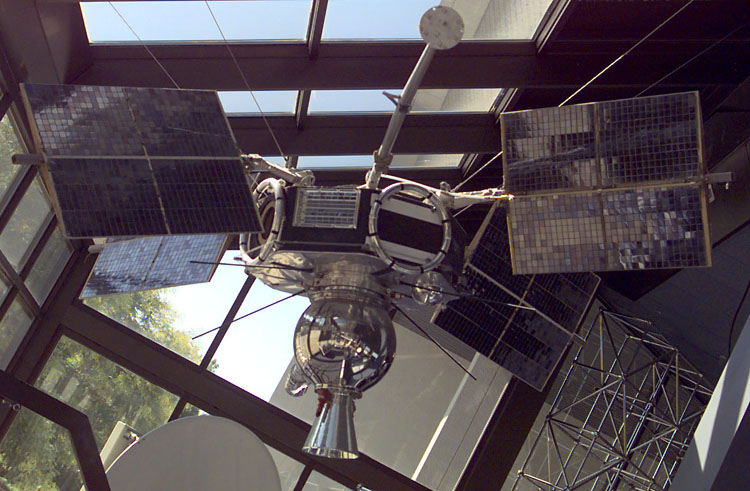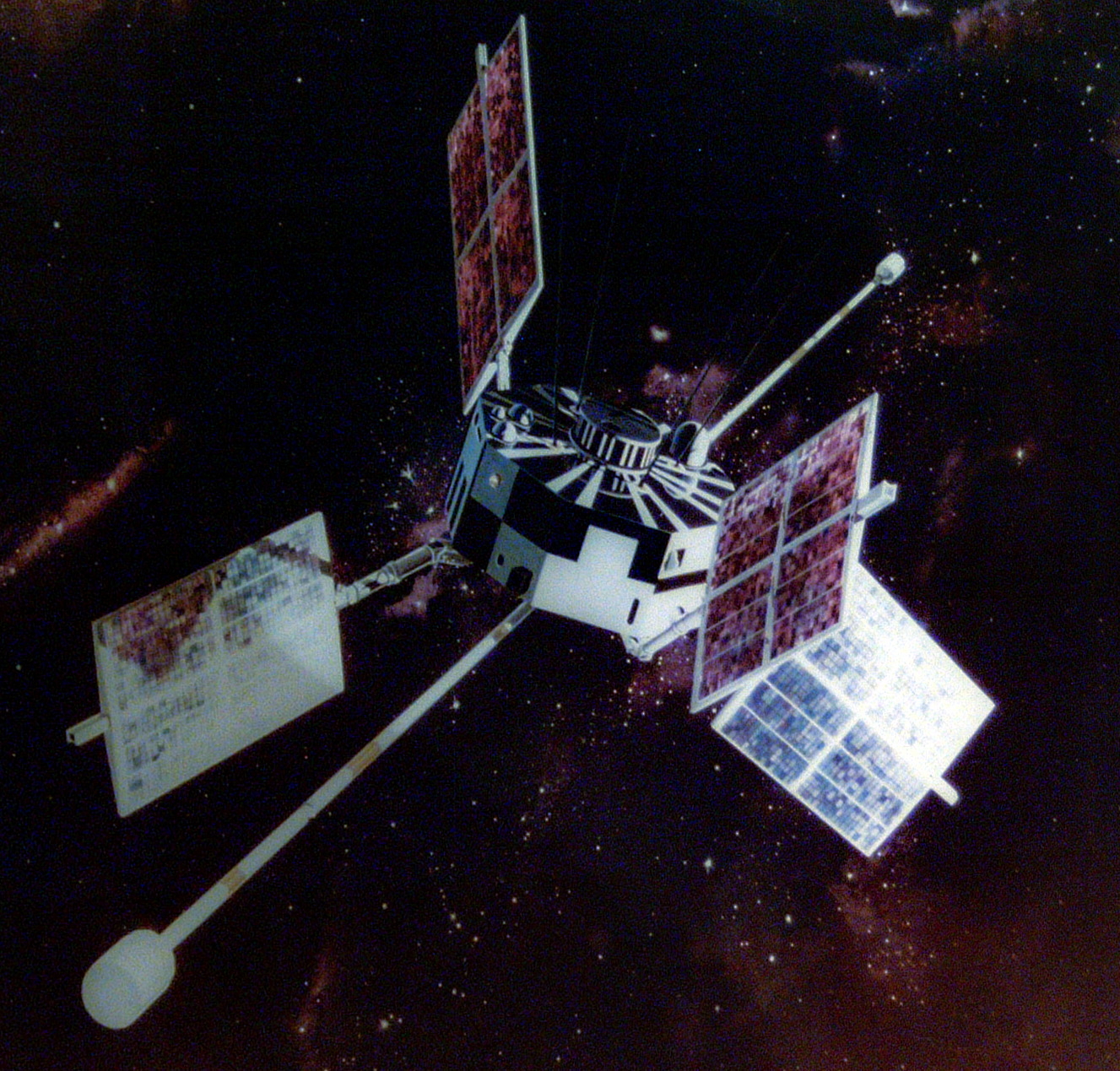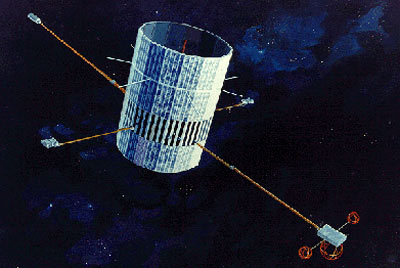Interplanetary Monitoring Platform on:
[Wikipedia]
[Google]
[Amazon]



 Interplanetary Monitoring Platform was a program managed by the
Interplanetary Monitoring Platform was a program managed by the
 The IMP program was the first space program to use
The IMP program was the first space program to use
IMP (Interplanetary Monitoring Platform)
David Darling Explorers Program



 Interplanetary Monitoring Platform was a program managed by the
Interplanetary Monitoring Platform was a program managed by the NASA Goddard Space Flight Center
The Goddard Space Flight Center (GSFC) is a major NASA space research laboratory located approximately northeast of Washington, D.C., in Greenbelt, Maryland, United States. Established on May 1, 1959, as NASA's first space flight center, GSFC ...
in Greenbelt, Maryland
Greenbelt is a city in Prince George's County, Maryland, United States, and a suburb of Washington, D.C. At the 2020 United States census, 2020 census, the population was 24,921.
Greenbelt is the first and the largest of the three experimental ...
, as part of the Explorers program, with the primary objectives of investigation of interplanetary plasma and the interplanetary magnetic field
A magnetic field (sometimes called B-field) is a physical field that describes the magnetic influence on moving electric charges, electric currents, and magnetic materials. A moving charge in a magnetic field experiences a force perpendicular ...
. The orbiting of IMP satellites in a variety of interplanetary and earth
Earth is the third planet from the Sun and the only astronomical object known to Planetary habitability, harbor life. This is enabled by Earth being an ocean world, the only one in the Solar System sustaining liquid surface water. Almost all ...
orbits allowed study of spatial and temporal relationships of geophysical and interplanetary phenomena simultaneously by several other NASA
The National Aeronautics and Space Administration (NASA ) is an independent agencies of the United States government, independent agency of the federal government of the United States, US federal government responsible for the United States ...
satellites.
Satellites
Technology
 The IMP program was the first space program to use
The IMP program was the first space program to use integrated circuit
An integrated circuit (IC), also known as a microchip or simply chip, is a set of electronic circuits, consisting of various electronic components (such as transistors, resistors, and capacitors) and their interconnections. These components a ...
(IC) chips, which it first launched into space with the IMP-A ( Explorer 18) in 1963. This predates the use of IC chips in the Apollo Guidance Computer
The Apollo Guidance Computer (AGC) was a digital computer produced for the Apollo program that was installed on board each Apollo command module (CM) and Apollo Lunar Module (LM). The AGC provided computation and electronic interfaces for guidanc ...
, used for the Apollo program
The Apollo program, also known as Project Apollo, was the United States human spaceflight program led by NASA, which Moon landing, landed the first humans on the Moon in 1969. Apollo followed Project Mercury that put the first Americans in sp ...
.
The MOSFET
upright=1.3, Two power MOSFETs in amperes">A in the ''on'' state, dissipating up to about 100 watt">W and controlling a load of over 2000 W. A matchstick is pictured for scale.
In electronics, the metal–oxide–semiconductor field- ...
(metal–oxide–semiconductor field-effect transistor, or MOS transistor) was adopted by NASA for the IMP program in 1964. The use of MOSFETs was a major step forward in spacecraft
A spacecraft is a vehicle that is designed spaceflight, to fly and operate in outer space. Spacecraft are used for a variety of purposes, including Telecommunications, communications, Earth observation satellite, Earth observation, Weather s ...
electronics
Electronics is a scientific and engineering discipline that studies and applies the principles of physics to design, create, and operate devices that manipulate electrons and other Electric charge, electrically charged particles. It is a subfield ...
design.
The IMP-D (Explorer 33
Explorer 33, also known as IMP-D and AIMP-1, is a spacecraft in the Explorer program launched by NASA on 1 July 1966 on a mission of scientific exploration. It was the fourth satellite launched as part of the Interplanetary Monitoring Platform ...
), launched in 1966, was the first spacecraft to use the MOSFET, which had been first demonstrated in 1960 and publicly revealed in 1963. MOS technology's simplicity of semiconductor device fabrication
Semiconductor device fabrication is the process used to manufacture semiconductor devices, typically integrated circuits (ICs) such as microprocessors, microcontrollers, and memories (such as Random-access memory, RAM and flash memory). It is a ...
and manufacturing enabled higher transistor count
The transistor count is the number of transistors in an electronic device (typically on a single substrate or silicon die). It is the most common measure of integrated circuit complexity (although the majority of transistors in modern microproc ...
s on integrated circuit
An integrated circuit (IC), also known as a microchip or simply chip, is a set of electronic circuits, consisting of various electronic components (such as transistors, resistors, and capacitors) and their interconnections. These components a ...
chips. This resolved a growing problem facing spacecraft designers at the time, the need for greater on-board electronic capability for telecommunications
Telecommunication, often used in its plural form or abbreviated as telecom, is the transmission of information over a distance using electronic means, typically through cables, radio waves, or other communication technologies. These means of ...
and other functions. The Goddard Space Flight Center
The Goddard Space Flight Center (GSFC) is a major NASA space research laboratory located approximately northeast of Washington, D.C., in Greenbelt, Maryland, United States. Established on May 1, 1959, as NASA's first space flight center, GSFC ...
used MOSFETs in building block circuits, with MOSFET blocks and resistors
A resistor is a passive two-terminal electronic component that implements electrical resistance as a circuit element. In electronic circuits, resistors are used to reduce current flow, adjust signal levels, to divide voltages, bias active e ...
accounting for 93% of the IMP-D's electronics. MOS technology greatly increased the number of on-board transistors
A transistor is a semiconductor device used to Electronic amplifier, amplify or electronic switch, switch electrical signals and electric power, power. It is one of the basic building blocks of modern electronics. It is composed of semicondu ...
and communication channel
A communication channel refers either to a physical transmission medium such as a wire, or to a logical connection over a multiplexed medium such as a radio channel in telecommunications and computer networking. A channel is used for infor ...
s, from 1,200 transistors and 175 channels on the first three IMP spacecraft up to 2,000 transistors and 256 channels on the IMP-D. MOS technology also greatly reduced the number of electrical
Electricity is the set of physical phenomena associated with the presence and motion of matter possessing an electric charge. Electricity is related to magnetism, both being part of the phenomenon of electromagnetism, as described by Maxwel ...
parts required on a spaceship, from 3,000 non-resistor parts on the IMP-A ( Explorer 18) down to 1,000 non-resistor parts on the IMP-D, despite the IMP-D having twice the electrical complexity of the IMP-A. The MOSFET blocks were manufactured by General Microelectronics
General Micro-electronics (GMe) was an American semiconductor company in the 1960s. It was formed by three former members of Fairchild Semiconductor, and is thus one of the "Fairchildren". It was acquired in 1966 by Philco-Ford and became their Mi ...
, which had NASA as its first MOS contract shortly after it had commercialized MOS technology in 1964.
Applications
IMPs were used to study themagnetic fields
A magnetic field (sometimes called B-field) is a physical field that describes the magnetic influence on moving electric charges, electric currents, and magnetic materials. A moving charge in a magnetic field experiences a force perpendicular ...
, solar wind
The solar wind is a stream of charged particles released from the Sun's outermost atmospheric layer, the Stellar corona, corona. This Plasma (physics), plasma mostly consists of electrons, protons and alpha particles with kinetic energy betwee ...
and cosmic rays
Cosmic rays or astroparticles are high-energy particles or clusters of particles (primarily represented by protons or atomic nuclei) that move through space at nearly the speed of light. They originate from the Sun, from outside of the Solar ...
outside the magnetic field of the Earth. It was closely related to the development of the Apollo program
The Apollo program, also known as Project Apollo, was the United States human spaceflight program led by NASA, which Moon landing, landed the first humans on the Moon in 1969. Apollo followed Project Mercury that put the first Americans in sp ...
. The IMP program consisted of a network of eleven satellites
A satellite or an artificial satellite is an object, typically a spacecraft, placed into orbit around a celestial body. They have a variety of uses, including communication relay, weather forecasting, navigation ( GPS), broadcasting, scientif ...
designed to collect data on space radiation
Space is a three-dimensional continuum containing positions and directions. In classical physics, physical space is often conceived in three linear dimensions. Modern physicists usually consider it, with time, to be part of a boundless ...
in support of the Apollo program. The IMP satellites investigated plasma (ionized gas
Plasma () is a state of matter characterized by the presence of a significant portion of charged particles in any combination of ions or electrons. It is the most abundant form of ordinary matter in the universe, mostly in stars (including the ...
), cosmic rays, and magnetic fields in interplanetary and cislunar space, from various solar and terrestrial orbits. Data gathered by IMP spacecraft and satellites were used to support the Apollo program, enabling the first human Moon landing
A Moon landing or lunar landing is the arrival of a spacecraft on the surface of the Moon, including both crewed and robotic missions. The first human-made object to touch the Moon was Luna 2 in 1959.
In 1969 Apollo 11 was the first cr ...
with the Apollo 11
Apollo 11 was a spaceflight conducted from July 16 to 24, 1969, by the United States and launched by NASA. It marked the first time that humans Moon landing, landed on the Moon. Commander Neil Armstrong and Lunar Module pilot Buzz Aldrin l ...
mission in 1969.
References
{{reflistExternal links
IMP (Interplanetary Monitoring Platform)
David Darling Explorers Program